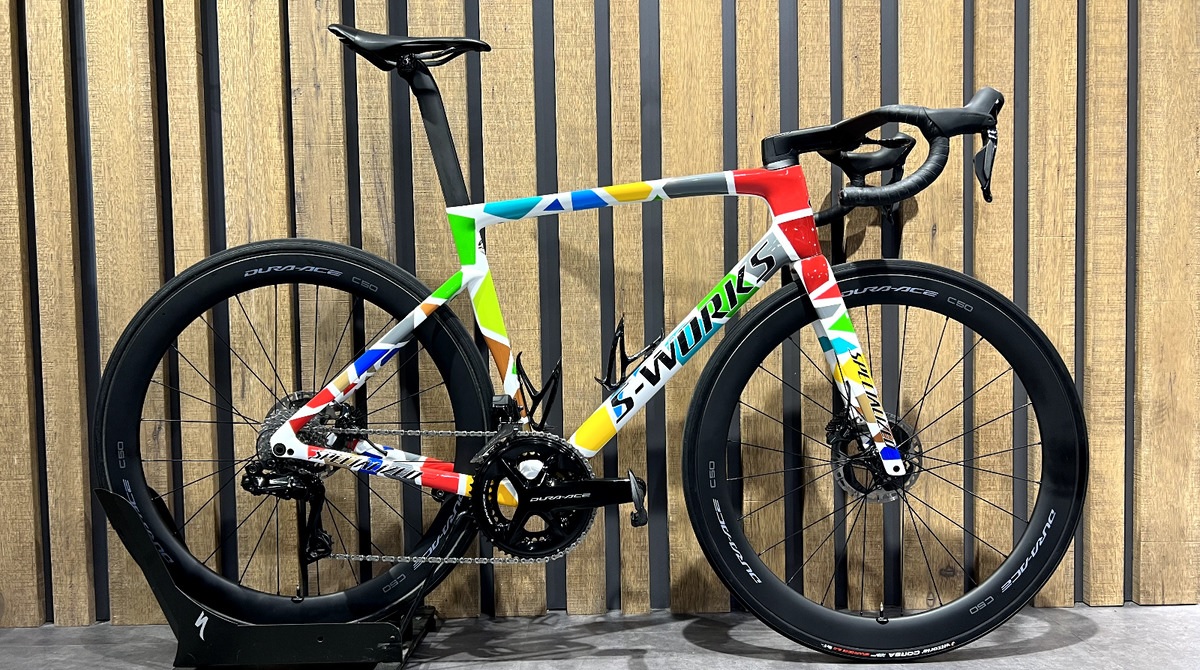
Granfondo STRADE BIANCHE 2026 Nutrition and Supplementation: A Complete Program of Integration and Diet – Tips, Secrets, and a Step-by-Step Guide
Granfondo Cycling: Explore the Ultimate Endurance Challenge in 2025 & 2026
Gran Fondo Strade Bianche 2026: Date, Course, Elevation, Registration, and Contact Info
Granfondo Strade Bianche 2026 Nutrition and Supplementation: The Complete Program
The Granfondo Strade Bianche is not just any Granfondo. It's an epic challenge, a journey through the evocative gravel roads of Tuscany that requires not only strong legs and technical skill, but also an impeccable nutrition and supplementation strategy. The "white pavement" uniquely tests your body, and targeted nutrition can make the difference between battling through difficulties and dominating the course. This comprehensive guide will provide you with a step-by-step program, practical tips, and the secrets to optimally fuel your body before, during, and after the Granfondo Strade Bianche.
The Foundations of Heroic Cyclist Nutrition
To sustain intense training and the vibrations of the gravel sectors, your body needs a constant and balanced supply of energy and nutrients.
Carbohydrates: These are your primary fuel source. Prioritize complex carbohydrates (pasta, rice, spelt, potatoes, whole grains) for a gradual and sustained energy release, essential for endurance. Use simple carbohydrates (fruits, honey, gels) for quick energy boosts during activity.
Proteins: Fundamental for muscle repair and building, heavily stressed by vibrations and intense efforts on gravel. Supplement with lean meat, fish, eggs, legumes, and dairy products.
Fats: Provide long-term energy and are crucial for vitamin absorption. Opt for unsaturated fats like extra virgin olive oil, nuts, avocado, and oily fish.
Vitamins and Minerals: Essential for countless bodily functions, including energy metabolism and immune system health, often stressed by activity on gravel. Ensure a wide variety of fresh fruits and vegetables.
Pre-Race Nutrition and Supplementation Program (The Decisive Week)
The week leading up to the Granfondo Strade Bianche is crucial for maximizing glycogen stores (your stored energy) and ensuring optimal hydration.
From Day -7 to Day -3: Carbohydrate Loading and Progressive Hydration
Start gradually increasing your carbohydrate intake and focus on hydration.
Nutrition:
Increase the portion of complex carbohydrates by 10-15% at each main meal (e.g., slightly larger servings of pasta, rice, potatoes, bread).
Maintain an adequate intake of lean proteins.
Gradually reduce the consumption of foods too rich in fiber (leafy greens, unhulled legumes, whole grains) and excessive fats (fried foods, heavy dressings) to minimize the risk of gastrointestinal discomfort.
Hydration:
Drink plenty of water throughout the day, aiming for 2.5-3 liters.
Consider using hypotonic or slightly isotonic drinks with electrolytes if the weather is hot or if your sweating rate is high.
Day -2: Glycogen Peak
This is the day your energy reserves should reach their maximum.
Nutrition:
Breakfast: Hearty and centered on complex carbohydrates (e.g., oatmeal with water/plant-based milk and jam, toast with honey).
Lunch and Dinner: Meals rich in highly digestible complex carbohydrates (e.g., plain rice or pasta with a light sauce, boiled potatoes). Continue to limit fiber, raw vegetables, and whole foods.
Snacks: Fruit (very ripe bananas), rice cakes, plain crackers, honey.
Hydration: Continue to drink consistently.
Day -1 (Race Eve): Lightness and Maintenance
The goal is to keep reserves full without overloading the digestive system.
Nutrition:
Breakfast and Lunch: Similar to Day -2, but with slightly smaller portions to avoid feelings of fullness.
Dinner: A light and easily digestible meal, consumed 3-4 hours before bedtime. Opt for plain rice or pasta with a simple dressing (e.g., EVOO and Parmesan), or a small portion of steamed chicken or fish with potatoes. Absolutely avoid foods that you know are difficult for you to digest.
Hydration: Make a final push to achieve perfect hydration before sleep.
Race Day: Fueling Strategy for Tackling the Gravel
This is the time to put your tested nutritional strategy into practice.
Breakfast (3 hours before start):
Food: Must be rich in easily digestible complex carbohydrates, low in fat and fiber.
Examples: Porridge (with water or plant-based drink) with honey/jam, plain white toast with jam, rice cakes, plain boiled rice, ripe banana.
Quantity: Aim for 1.5-2 grams of carbohydrates per kg of body weight.
Hydration: Drink approximately 500 ml of water or an isotonic drink.
Pre-start (Last hour):
Hydration: Sip 200-300 ml of water or an isotonic drink for final hydration.
Supplementation:
Carbohydrates: An energy gel or a small, fast-absorbing bar (about 20-30g of carbohydrates) 15-30 minutes before the start.
Caffeine (optional): If you're accustomed to it, a small dose (e.g., 100-150mg) for a stimulating effect. Do not try it for the first time on race day.
During the Race: The "On-The-Rough-Go" Fuel Management
Tackling the gravel sectors of Strade Bianche implies additional stress for the body and digestion. Regular intake of energy and fluids is vital.
Hydration:
Drink in small sips, every 10-15 minutes, without waiting to feel thirsty. Vibrations can make you forget to drink.
Alternate water with isotonic drinks (with carbohydrates and electrolytes) in your bottles.
Aim for 500-1000 ml of fluids per hour, adjusting based on intensity, temperature, and sweat rate. Ensure your bottles are securely fastened!
Carbohydrates:
Consume 60-90 grams of carbohydrates per hour of activity. Regularity is fundamental; distribute intake every 20-30 minutes.
Energy gels: Extremely practical and quick to assimilate, ideal on gravel sections where it's difficult to chew. Always take them with water.
Energy bars: Choose soft bars that are easy to chew. Consume them preferably on paved or less technical sections.
Fruit: Ripe bananas (easy to digest) or dates can be excellent natural alternatives.
Vary your sources: Don't rely on just one type of product. Alternating helps prevent nausea and palate fatigue.
Electrolytes: Given the intensity and vibrations that increase energy consumption and sweating, mineral salt tablets dissolved in water can be particularly useful, especially if you sweat a lot or in hot conditions.
Post-Race Recovery: Crucial for Future Challenges
Recovery begins immediately after you cross the finish line. The goal is to replenish depleted glycogen stores and initiate the repair of muscle tissues stressed by the gravel sectors.
Within 30-60 minutes (The "Anabolic Window"):
Carbohydrates and Proteins: Consume a mix of fast-absorbing carbohydrates and proteins (3:1 or 4:1 carbohydrate/protein ratio).
Examples: Recovery shake (with whey protein and maltodextrins), Greek yogurt with fruit and honey, honey/jam sandwich, protein-energy bar.
Hydration: Continue drinking water and electrolyte-rich beverages.
In the Following 2-4 Hours:
Complete and balanced meal: Consume a meal that includes abundant complex carbohydrates, lean proteins, and fresh vegetables for complete recovery.
Examples: Pasta or rice with a light sauce and a protein source (chicken breast, baked fish), or potatoes with eggs/legumes and mixed vegetables.
Hydration: Continue hydrating until your urine is clear.
Additional Tips and Secrets for a Winning Nutritional Strategy on Strade Bianche
Test everything in training, especially on gravel: Never introduce new foods or supplements on race day, especially on uneven surfaces where digestion can be more critical.
Listen to your body: The vibrations of gravel can mask hunger or thirst signals. Be proactive with your fueling.
Plan your aid stations: Study the location of aid stations along the Granfondo Strade Bianche route and decide in advance what you'll take from them and what you'll carry with you.
Vary your sources: Don't rely on just one type of gel or bar. Variety helps prevent nausea, palate fatigue, and digestive problems.
Pay attention to salt: Given the intensity and potential heavy sweating on gravel sectors, sodium supplementation is particularly important to prevent cramps.
Morning hydration: Sip fluids gradually in the hours before the start to avoid feeling too full or needing frequent bathroom breaks.
Specific Supplements (To Be Evaluated with a Professional)
While a well-structured diet is the foundation, some supplements can provide extra support, but always after consulting with a doctor or sports nutritionist.
Maltodextrins/Fructose: Primary carbohydrate components in energy drinks and gels for quick carbohydrate delivery.
BCAAs (Branched-Chain Amino Acids): Can help reduce muscle catabolism and perceived fatigue, useful after prolonged efforts.
Beta-Alanine: May contribute to buffering lactic acid, delaying muscle fatigue during intense and repeated efforts.
Mineral Salts: Sodium chloride, potassium, magnesium, and calcium are fundamental for muscle function, cramp prevention, and hydration.
Conclusions
Nutrition and supplementation are fundamental pillars for successfully tackling the Granfondo Strade Bianche. Careful planning before the race, intelligent management of nutrients during the legendary gravel sectors, and effective recovery will allow you not only to complete the route but to do so to the best of your abilities, enjoying an unforgettable cycling experience. Prepare your body with the same meticulousness you prepare your bike, and you'll be ready to conquer the "white pavement" of Tuscany!
